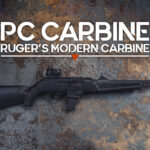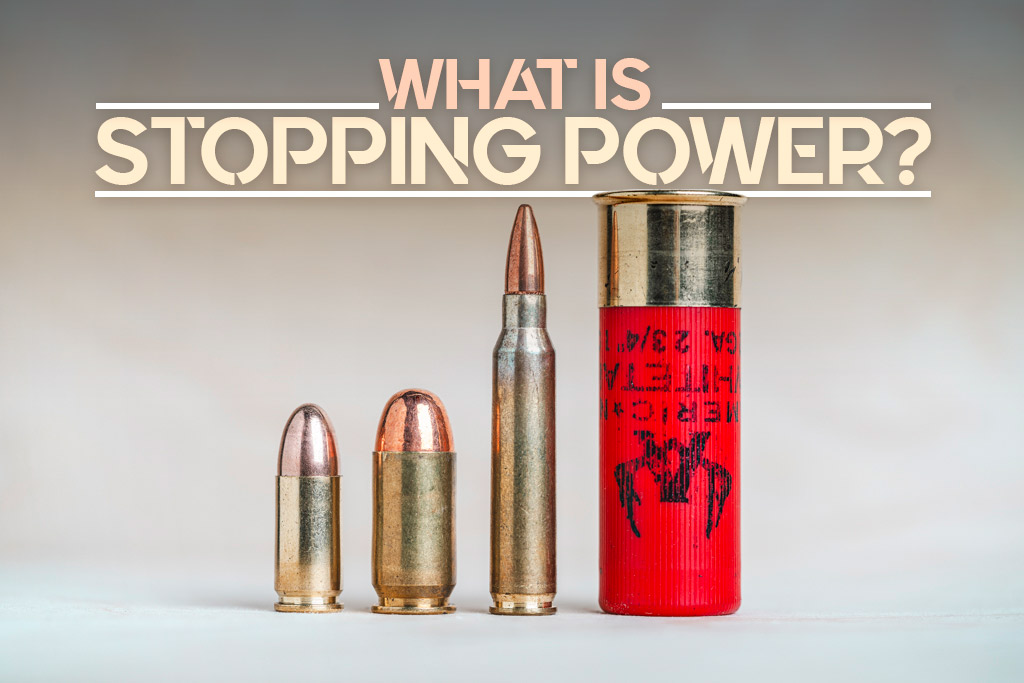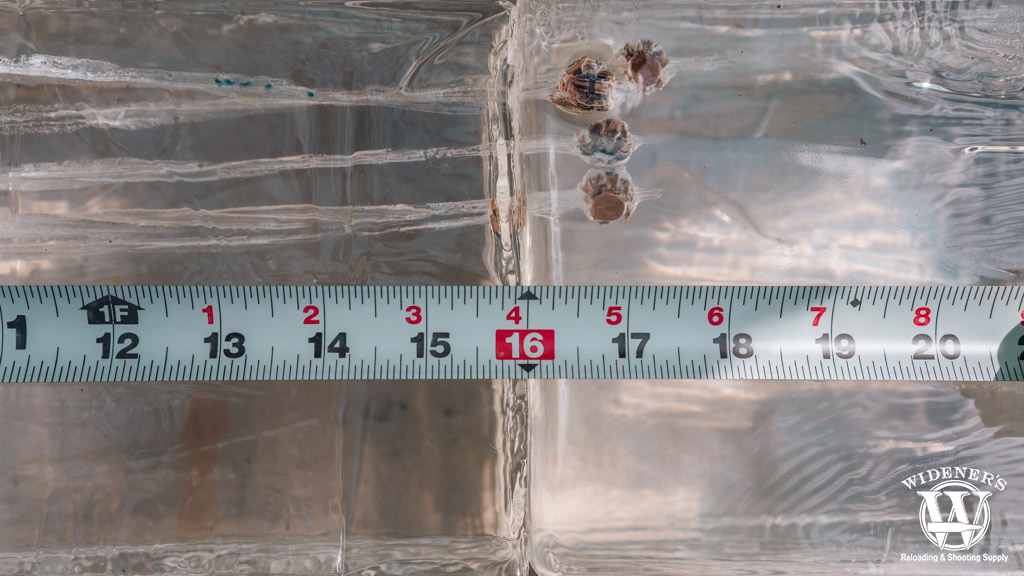

Stopping power, or “knockdown power,” is a projectile’s ability to incapacitate a target, whether animal or human. While almost everyone’s heard the term, understanding exactly what it means can be tough. All the confusion surrounding stopping power is mainly due to Hollywood’s unrealistic depictions of what happens when someone gets shot.
In TV and movies, one bullet will send a grown man flying backward. Depending on how over-the-top the flick is, they may do a backflip, launch off a building, or perform another acrobatic feat. On the other hand, the invincible hero shrugs off round after round until he completes the mission, saves the girl, and rides off into the sunset.
“As you will learn shortly, there are no ‘magic bullets” — there is no free lunch, and there is no substitute for marksmanship.” – Evan P. Marshall (
As is often the case, the truth lies somewhere in the middle. Let’s dive deeper into the science of terminal ballistics to get to the bottom of stopping power. We’ll examine the five factors influencing what happens when a bullet hits something.
What Are Terminal Ballistics?
Terminal ballistics is the study of how a projectile behaves when it impacts a target and transfers its kinetic energy.
Also referred to as wound ballistics, terminal ballistics is important for hunting and self-defense. Knowing about these principles helps you understand how a bullet transfers energy upon impact. Ideally, you want a round to transfer as much energy as possible and create a massive wound cavity, seriously damaging the inner workings of your target.
5 Factors That Impact Stopping Power

Caliber, muzzle velocity, energy, grain weight, and bullet type are key factors in determining stopping power.
While there are several factors that impact stopping power, the ones you should focus on include:
1. Caliber
Caliber refers to the projectile’s diameter, which we express in millimeters (e.g., 9mm) or hundredths of an inch (e.g., .40). If you’ve ever stumbled into a debate about whether 9mm or .45 is the better caliber, you know firsthand that some people equate a larger bullet diameter to more stopping power.
While a larger caliber translates to more surface area through which to transfer energy, bullet caliber is only one part of the stopping power equation. Take the 9mm vs .45 debate, for example. A 9mm is approximately 0.35 inches in diameter, meaning it’s just 1/10th of an inch smaller than a .45. If the 9mm cartridge has better design and terminal ballistics, it can overcome that size difference to deliver adequate stopping power.
2. Muzzle Velocity
Muzzle velocity is the speed at which the projectile exits the end of the barrel (muzzle). We measure muzzle velocity in feet per second (FPS). From the moment a bullet leaves the weapon, it begins to slow down.
To help shooters better understand how a bullet performs at range, firearms manufacturers typically provide bullet velocity data for standard usage distances. For rifles, manufacturers will measure bullet velocity at distances of 100 yards, 200 yards, and 300 yards. For handgun rounds, they will typically measure bullet velocity at 50 and 100 yards. They also take bullet energy measurements at these distances.
Now, back to our physics lesson for a moment. To calculate momentum, multiply a projectile’s velocity by its mass. To increase a bullet’s momentum, you need to make it heavier, add more powder to make it go faster, or both.
3. Bullet Mass
Bullet mass refers to how heavy the projectile is, and we express bullet mass in grains. One grain is a little more than six hundredths (0.06) of a gram.
The grain of a bullet varies greatly depending on your weapon system. For example, 9mm cartridges tend to weigh in the low to mid (100-grain) range, while .45 cartridges can weigh upwards of 200 grains. Looking at the weight discrepancies between the two cartridges, it becomes clearer why die-hard 1911 owners swear by the .45.
Admittedly, the 9mm makes up some of this ground by exhibiting higher velocity. But, as you will see in our final categories, muzzle energy and bullet shape are two of the most critical factors for determining stopping power.
4. Bullet Shape & Composition
Modern projectiles are available in a broad range of designs and material combinations. There are so many options that we could do an entire series on ammunition types and still not get to all of them.
For the stopping power conversation, we’ll focus on one aspect of bullet design: what it does when it hits the target. Some designs are prone to overpenetration, meaning they will power right through your target and go on to hit something else.
If you’re hunting, this means you’ll need to take a long walk in search of your prey to avoid accidental collateral damage. In a self-defense scenario, over-penetration is particularly concerning since it can cause your bullet to go through your target and endanger innocent bystanders.
Ideally, you want your bullet to expand when it hits its target, transfer as much energy as possible, and create a massive wound cavity. The wound cavity is the tissue void the projectile makes as it travels through its target. The larger the wound cavity, the higher the chances of incapacitation.
5. Muzzle Energy
Muzzle energy, expressed in foot-pounds, is a projectile’s kinetic energy (momentum) when it leaves the barrel. Like velocity, a bullet’s kinetic energy decreases the further it travels.
Muzzle energy and bullet design are the most critical factors influencing stopping power. If you hit your target with a projectile that has a ton of kinetic energy and the bullet creates a large wound cavity, your chance of incapacitating them is much higher. With that in mind, let’s briefly shift our attention back to the 9mm vs. .45 debate.
For fairness, we will compare a 9mm and .45 cartridge from the same product line, Hornady FTX Critical Defense, one of my go-to self-defense ammunition rounds.
The 9mm version is a 115-grain projectile, which exhibits a muzzle velocity of 1,135 FPS and 332 foot-pounds of muzzle energy. The .45 cartridge features a 185-grain projectile, has a muzzle velocity of 1,000 FPS, and 411 foot-pounds of muzzle energy. The 9mm remains faster than the .45 at both the 50-yard and 100-yard mark, but the larger projectile maintains much more muzzle energy at both thresholds.
Most 9mm handguns have a higher magazine capacity than their .45 counterparts. Plus, many shooters like the controllability of the 9mm. Each cartridge has pros and cons, but in terms of sheer stopping power, the .45 edges out its smaller, lighter 9mm.
Practical Tips: How To Assess Stopping Power

Federal HST 9mm 124gr bullets captured in ballistic gelatine using the FBI protocol.
Most ammunition manufacturers provide ballistics data for their cartridges. Some include this information on the box, while others only list it on their website. Plus, plenty of third-party sites (like this one) compile ballistics data on your favorite ammunition.
| Caliber | Bullet Type | Bullet Weight | Velocity (Muzzle) | Energy (Muzzle) | 50 Yards (Velocity/Energy) | 100 Yards (Velocity/Energy) |
|---|---|---|---|---|---|---|
| 9mm | FMJ | 115gr | 1,180 FPS | 356 FT LBS | 1,048 FPS/280 FT LBS | 961 FPS/236 FT LBS |
| .45 ACP | FMJ | 230gr | 890 FPS | 404 FT LBS | 856 FPS/374 FT LBS | 824 FPS/347 FT LBS |
| .223 Rem | FMJ | 55gr | 3,240 FPS | 1,282 FT LBS | 3,010 FPS/1,106 FT LBS | 2,874 FPS/1,008 FT LBS |
| 12-Gauge | Rifled Slug | 438gr | 1,610 FPS | 2,521 FT LBS | 1,340 FPS/1,746 FT LBS | 1,139 FPS/1,262 FT LBS |
The best way to assess the stopping power is to review the performance data on the cartridges you’re interested in. While there’s no “stopping power” metric, you can still define a round’s ability to down a target. Simply consider its weight, muzzle energy, and muzzle velocity.
Stopping Power: What Matters?

Stopping power has as much to do with accuracy and skill as it does with the caliber of the bullet being used.
Perhaps you’re a hunter wanting to avoid chasing prey through the woods after you take a shot. Or, maybe you’re looking for a viable self-defense round. Either way, stopping power is something to investigate, but it’s far from the only thing that matters.
When selecting a projectile, consider cost, availability, controllability, range, and skill level. Having great stopping power behind your bullet is excellent — if you can find ammo and get rounds on target.
For example, if a small-framed shooter has difficulty controlling handguns chambered in larger calibers like .45 ACP or 10mm, they’d do better with a round that suits their size. If that shooter can maintain tight shot groupings with a 9mm handgun, that’ll offset the reduced “stopping power” with better accuracy and follow-up shots.
The bad guy in a self-defense scenario won’t pay much attention to the size of the bullet you fire. However, they will take notice when you start slinging lead their way, especially if your shots are landing.
So, choose a bullet and handgun that aligns with your needs, shooting skill, and capabilities. If you can perform well with a .45 and want to carry a larger caliber weapon, do it. If you need something smaller to achieve better accuracy, it’s okay to sacrifice some stopping power and bullet size.


